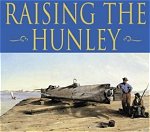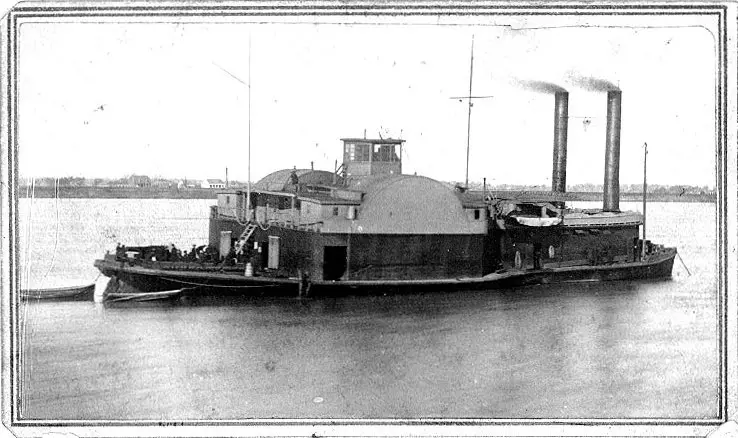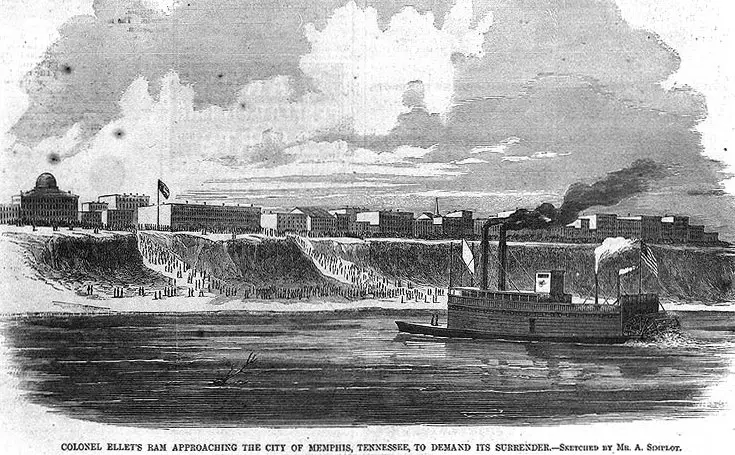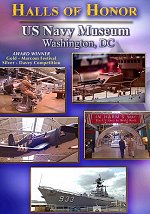RAMS
A "Ram" is a ship whose principal weapon is its own bow, hardened and reinforced to penetrate the hull of an enemy ship, and usually strengthened internally to avoid or reduce self-inflicted damage from the collision. Rams had a long history of success during the age of oared fighting ships, which could maneuver at will, and were particularly suitable for combat in coastal and inland waters.
The ram was impractical on sailing ships, which were less maneuverable and encumbered by extensive masts and rigging, but steam propulsion brought it back into favor. During the American Civil War, the Confederacy made extensive use of the ram, both on specialist ships and on ironclads that also carried heavy gun armament. Some conventional Union warships were modified for ramming and the North also employed a modest number of specialist rams in the Mississippi River area. These included the "Ellet Rams", which were Army ships that cooperated with the Navy, several rams captured from the Confederates, and two ships ( Avenger and Vindicator ) constructed for the Army but turned over to the Navy before completion in 1864.
Though subsequent events showed the ram to be a difficult weapon to use effectively and all too likely to harm friends more than foes, the incidents of the Civil War and the 1866 war between Austria and Italy kept it in favor beyond the end of the 19th Century. Though the ram was usually fitted as an auxiliary weapon on ships mainly armed with guns, the U.S. Navy did build one specialist ram ship in the 1890s, USS Katahdin . During the two World Wars, the ram enjoyed a brief revival when many destroyers and other smaller warships were given specially hardened bows to attack surfaced submarines.
Civil War Era Rams used by, or employed in association with, the U.S. Navy included:
I. Commissioned U.S. Navy Rams (or ships that had been rams in Confederate service before entering the U.S. Navy).
- General Bragg (1862-1865). 1043-ton side-wheel steamer, 208' long. Formerly CSS General Bragg
- General Price (1863-1865). 483-ton side-wheel steamer, 182' long. Formerly CSS General Sterling Price
- Sumter (1862-1862). 524-ton side-wheel steamer, 182' long. Formerly CSS General Sumter
- Avenger (1864-1865). 410-ton side-wheel steam ram, 210' (or 181') long.
- Vindicator (1864-1865). 750-ton side-wheel steam ram, 210' long.
II. The "Ellet Rams".
In March 1862, the U.S. Army authorized the noted civil engineer Charles Ellet, Jr., to establish a flotilla of steam rams for employment on the Western Rivers. Ellet converted several powerful river towboats, heavily reinforcing their hulls for ramming. These ships had light protection for their boilers and upperworks, but were originally given no artillery. With the rank of Colonel, Ellet led his force in action during the Battle of Memphis on 6 June 1862, where rams played an important role in the Union victory against the Confederate River Defense Fleet. However, Colonel Ellet died several days later of a wound received at that action.
Alfred Ellet , Charles Ellet's brother, then took command of the rams. Under his leadership, the rams figured prominently in actions around and below Vicksburg into 1863. Ellet's ram fleet was technically owned and operated by the Army even after the transfer of the Western Gunboat Flotilla to the Navy and was always somewhat independent of Navy command. After the threat of Confederate warships declined, it was reorganized as the Mississippi Marine Brigade, employing its ships and troops for amphibious operations. The Ellet fleet was disestablished in August 1864, and its surviving ships were transferred to other duties.
The "Ellet Ram Fleet" included the following ships:
- Lancaster (1862-1863). 257-ton side-wheel steam ram, 176' long.
- Monarch (1862-1864). 406-ton side-wheel steam ram.
- Queen of the West (1862-1863). 406-ton side-wheel steam ram, 181' long.
- Switzerland (1862-1865). 413-ton side-wheel steam ram, 178' long.
- Lioness (1862-1865). 198-ton stern-wheel steam ram.
- Mingo (1862-1862). 228-ton stern-wheel steam ram.
- Samson (1862-1865). 230-ton stern-wheel steamer. Served as a U.S. Navy auxiliary after 1862.
- Fulton (1862-186?, also called Dick Fulton ). 175-ton stern-wheel steamer, used as an auxiliary.
- T.D. Horner (1862-1865, also called Horner ). 123-ton stern-wheel steamer, used as an auxiliary.

Raising the Hunley: The Remarkable History and Recovery of the Lost Confederate Submarine
For more than a century the fate of the Hunley remained one of the great unsolved mysteries of the Civil War. Then, on August 8, 2000, with thousands of spectators crowding Charleston Harbor, the Hunley was raised from the bottom of the sea and towed ashore.
Kindle Available

The H. L. Hunley
The Secret Hope of the Confederacy
On the evening of February 17, 1864, the Confederacy H. L. Hunley sank the USS Housatonic and became the first submarine in world history to sink an enemy ship. Not until World War I "half a century later” would a submarine again accomplish such a feat. But also perishing that moonlit night, vanishing beneath the cold Atlantic waters off Charleston, South Carolina, was the Hunley and her entire crew of eight
















